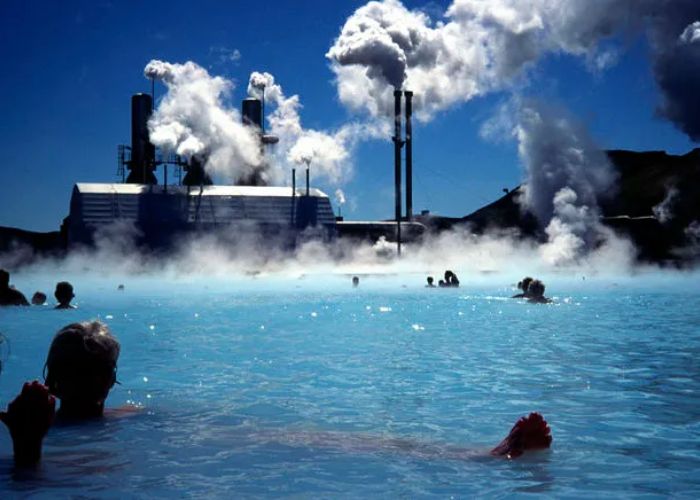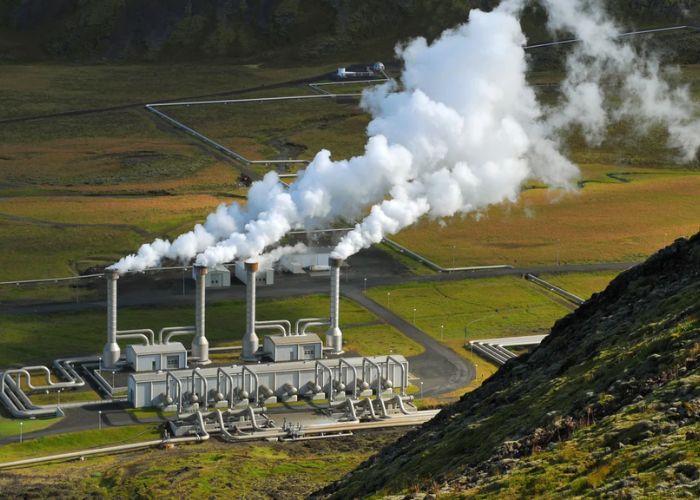With over seven years of experience in the energy sector, I am continually seeking new and better ways to produce electricity without negatively impacting the environment. That’s why the news of Iceland’s Nesjavellir Geothermal Power Station came as such a shock to me. This plant showcases the immense potential of geothermal energy to generate large-scale, sustainable power. Key facts regarding the Nesjavellir plant will be shared in this article, along with reasons why it serves as an example for sustainable energy development worldwide. Let’s read below about “Nesjavellir Geothermal Power Station – Big Iceland Geothermal News”.
Nesjavellir Geothermal Power Station – Big Iceland Geothermal News
Overview of the Nesjavellir Geothermal Power Station
Geothermal resources abound in the region surrounding the Nesjavellir plant, which is close to Reykjavik, the capital of Iceland. Building started in 1987 and the first turbine turned on in 1990. With an installed capacity of approximately 120 MW, Nesjavellir now meets more than 25% of the electrical demands of the capital region of Iceland.
The power station uses wells drilled to depths of 2,000 to 3,000 meters to access various geothermal fields. In order to run the high-pressure steam turbines at the facility, the superheated steam and hot water are drawn from these wells. A binary cycle is also in use at these sites; this involves using the geothermal fluid to heat a secondary fluid that has a lower boiling point in order to produce more power.
To keep the resource going, the geothermal fluids are reinjected into the reservoir once their thermal energy has been transformed into electricity. Due to its efficient design, the plant is able to produce more than 840 GW-hours of power annually.
Key Benefits of Geothermal Power Demonstrated at Nesjavellir
Nesjavellir, one of the world’s largest geothermal facilities, exemplifies the important advantages of this technology:
- Renewable and Reliable – Heat is continually produced deep inside the earth by geothermal, making it an intrinsically renewable power source. Reliable baseload capacity can be provided by plants like Nesjavellir, which can operate regularly throughout the year.
- Low Emissions – One of the most environmentally friendly energy sources is geothermal electricity, which produces very few emissions. Comparatively, a coal or natural gas plant produces around 10 times as much carbon dioxide as Nesjavellir.
- Sustainable Heat Utilization –Nesjavellir not only generates power, but it also supplies heat for the vast district heating system in Iceland, which in turn heats 90% of the buildings in the capital region. When used together, these features make the plant even more efficient and environmentally friendly.
- Economic Development – The building and running of Nesjavellir generates a lot of money for Iceland’s government, which helps fund other infrastructure projects and hires people. Thanks in large part to its geothermal resources, Iceland is now a global leader in renewable energy.
- Scalable Capacity – The capacity to scale up or down is a key feature of modular geothermal systems, allowing them to adapt to changing energy demands. Thanks to more drilling and turbines, Nesjavellir has more than doubled its capacity since its inception.
The Nesjavellir plant shows how geothermal power can support a renewable power grid, which is important for Iceland because of the country’s growing population and increasing energy needs. Geothermal energy may be safely and sustainably harnessed on a massive scale to satisfy national energy goals, as demonstrated by this project.
Key Factors in Nesjavellir’s Success
From what I’ve seen working in the energy industry, there are a few main reasons why Nesjavellir is considered a top-tier geothermal project:
Read More:- Noor Solar Power Plant – Morocco’s Top Solar Energy Facility
- Extensive resource assessment – During the development stages of Nesjavellir, the vast geothermal potential of Iceland was carefully considered due to the country’s distinctive geology. That way, a large-scale factory might be supported by an appropriate supply of heat.
- Strategic location – Because of its central location, Nesjavellir was able to meet the high demand for heating and energy in Reykjavik. With this improved system of transmission and district heating integrated.
- Phased capacity growth – Building the plant in stages that corresponded to resource availability and electricity demands allowed for phased capacity increase. The project scale could be modified as needed because of this.
- Operator expertise – The facility is operated by Reykjavik Energy, the top geothermal utility in Iceland. A highly efficient facility could not have been delivered without their specialist knowledge.
- Policy support – Investment in geothermal was made possible by Iceland’s robust renewable energy policy and carbon reduction targets.
- Public-private partnerships – Project participants included the utility, public agencies, and private enterprises working together to combine resources and expertise; this model is known as a public-private partnership.
Together, these factors allowed Nesjavellir to conquer the challenges of geothermal development on a grand scale and establish a new benchmark for the sector.

Global Potential for Geothermal Energy
At present, around 0.3% of the world’s electrical power comes from geothermal sources. But geothermal resources are abundant and could grow rapidly in many parts of the globe. Nesjavellir proves, in my opinion, that geothermal energy can be used for more than just specific niches; it can also make a significant impact on the country’s energy supply, especially in areas that aren’t volcanic.
Read More:- Kusile Power Station – South Africa’s Modern Coal Power Updates
Regions that could benefit from geothermal energy in the same way as Iceland could include those in the East African Rift Valley, Southeast Asia, Latin America, and those around the Pacific Ring of Fire. Many more “Nesjavellirs” could be established internationally in the next decades with the correct mix of resource mapping, legislative backing, and public-private collaboration.
According to canarymedia, There are obstacles to achieving this potential. Drilling into deep geothermal reservoirs is still a risky and costly endeavor. Negative repercussions, such as land subsidence and induced seismicity, could occur if not handled correctly. One way to lessen the impact of these risks is to use measures that have been proven effective in the past.
Our energy systems must be transformed immediately in response to the climatic catastrophe. Geothermal should be more heavily used in our energy mix because it is a renewable baseload supply that has been demonstrated. Achievable, firm, low-carbon geothermal power is demonstrated in Nesjavellir, which lays the groundwork for the development of sustainable energy infrastructure.
Conclusion
The Path is Led by Iceland In terms of large-scale geothermal development, the Nesjavellir Geothermal Power Station is in a league of its own. The capital region of Iceland has benefited greatly economically and environmentally from this facility’s provision of renewable power and heating for more than 25 years.
Nesjavellir exemplifies the potential benefits of geothermal energy on a worldwide scale, in my opinion as an energy expert. This project proves that even developed economies can rely on geothermal power for their primary and sustainable electricity needs. A greener energy future is within reach if we can find a way to harness the immense heat under our feet while also protecting the environment. I hope you like reading “Nesjavellir Geothermal Power Station – Big Iceland Geothermal News”.

Mohsen Ali is a Chemical Engineer with over a decade of experience in the energy sector. Specializing in power plant efficiency and sustainability, he brings expert insights to borderpowerplants.org. Mohsen holds a Master’s degree in Chemical Engineering and is dedicated to advancing sustainable energy solutions. Connect with him on Instagram or LinkedIn for more insights.
